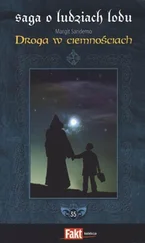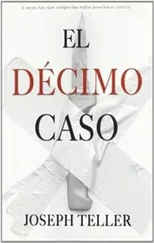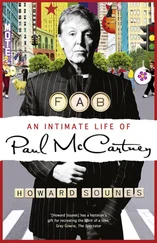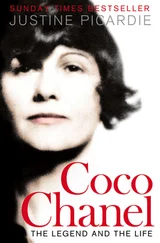Le Boeuf came to represent not only the turmoil, disenchantment and excesses of the period, it also reflected every aspect of the intense, almost febrile creative atmosphere of those interwar years in Paris. In those same years, Gabrielle and Cocteau’s friendship was cemented. While Cocteau was accused of having no path of his own and of walking along everyone else’s, in writing about his spectacle Le boeuf sur le toit he also epitomized the mood of the times when he said, “Here, I avoid subject and symbol. Nothing happens, 13or what does happen is so crude, is so ridiculous, that it is as though nothing happens.” Cocteau’s dizzyingly varied artistic activity antagonized many, yet it was the ever-perceptive English poet W. H. Auden who captured what Cocteau had to offer and saw that it was important. Here one sees how modern Cocteau was, and also why Gabrielle had so much time for him:
Now and then an artist appears… who works in a number of media and whose productions in any one of them are so varied that it is difficult to perceive any unity of pattern or development… Both the public and the critics feel aggrieved… His fellow artists… are equally suspicious and jealous of a man who works in several [media]. His first concern is for the nature of the medium and its hidden possibilities… a person who is open to the outside world, so little concerned with “self-expression,” is naturally responsive to the present moment and liable, therefore, to incur the charge of wanting, at all costs, to be chic. To this one can only answer that to be “timely” is not in itself a disgrace: Cocteau has never followed fashion though he has sometimes made it. 14
In 1919, Cocteau had met and fallen for the precocious sixteen-year-old writer Raymond Radiguet, whose “cool insolence, now spontaneous, now calculating,” people found either repulsive or alluring. His quite remarkable callousness aside, Radiguet’s astounding precocity and association with the great socializer Cocteau meant that he not only became known, he made it his business to know all Paris. This included frequently being present at Gabrielle’s table.
Radiguet periodically resisted his clamorous lover-mentor Cocteau and would disappear to indulge in one, or all, of his escape routes: alcohol, opium and women. Madame Warkowska, frequenter of Le Boeuf sur le Toit, introduced him to opium. Her effortlessly modish judgment on the prevalence of the drug was: “Opium? Why make such a fuss? I smoked at my first communion in Shanghai.” 15When Radiguet wasn’t fulfilling Max Jacob’s injunction “You have to do things,” the boy wrote hard. Cocteau said, “He wrote the way Beau Brummel dressed. No tics, no patina, but a special gift… of making the new look as though it had been seen before.” Referring to Diaghilev’s famous command to Cocteau—“Astonish me”—Radiguet subsequently countered with the remarkably adult “Elegance consists in not astounding.” 16These two injunctions—“making the new look as though it had been seen before” and “Elegance consists in not astounding”—so exactly characterized Gabrielle’s philosophy, they could have been her motto.
In the autumn of 1922, Cocteau asked Gabrielle if she would design the costumes for his modernized version of Sophocles’ Antigone. The play’s theme, defiance of the establishment, was then a most attractive one. With scenery by Picasso and music by Arthur Honegger, of Les Six, the actor Charles Dullin played Creon. (This was the same Charles Dullin who had accompanied Gabrielle to the first night of The Rite of Spring, in 1913; his lover Caryathis had wanted to attend the performance with her other lover.)
Cocteau said, “To costume my princesses I wanted Mlle Chanel, because she is our leading dressmaker, and I cannot imagine Oedipus’s daughters patronizing a “little dressmaker”… I chose some heavy Scotch woolens, and Mlle Chanel’s designs were so masterly, so instinctively right.” 17Indeed, Gabrielle’s costumes were powerful and convincing, and Vogue said they looked like “antique garments discovered after centuries.” However, in an angry moment during a rehearsal, when Gabrielle felt her contribution wasn’t being appreciated, she grabbed a strand of the heroine’s hand-knitted coat and pulled it so far undone that there was no time to reknit it; the heroine wore one of Gabrielle’s own coats.
Charles Dullin said, “Many society people came to the performances because of Chanel, Picasso and Cocteau.” The play was a success, and while the likes of André Gide and the poet Ezra Pound spoke in its favor, in the end, it was Gabrielle who was commended for her costumes, rather more than her collaborators.
By March 1923, elite magazines such as Vogue were writing that “Gabrielle Chanel is now famous for her treatment of the youthful short-skirted silhouette which innumerable smart women have achieved.” While a leader of fashion, at the same time, Gabrielle was almost “outside” it. Thus Vogue wrote, “She doesn’t concern herself with fashion but with her fashion, she improvises dresses which… do not age.”
The following month, the magazine stated, “There is not only a Chanel Collection, there is a Chanel ‘style’ made of youth, suppleness… [Its] somewhat sporty, yet very feminine look, met the needs of our time so well that women adopted it with enthusiasm as soon as it appeared.” Gabrielle herself was always the best advertisement for her fashions, and Vogue wrote, “Mlle Chanel… wears the designs her clients love with so much chic herself… that her daring provokes admiration; her success applause!” And in August, about a Diaghilev gala, the magazine cooed, “Snobs would have given anything to be there that night! Just think: the Marquise de Ludres is on the right… the Comtesse de Beaumont… the Duchesse de Gramont… Comtesse de Requena, Mme Sert, Grande Duchesse Marie, the Comtesse de Chevigné.” (All, except Requena, were dressed by Gabrielle.) Vogue continued, “And there is Gabrielle Chanel, dressed entirely in white, and covered in pearls.”
Three more of that summer’s grand events give a flavor of Gabrielle’s entertainment: the Beaumonts’ fabulous annual fancy dress ball; Diaghilev’s premiere party for Stravinsky’s ballet Les Noces, at Le Boeuf sur le Toit; and a now-fabled party for Stravinsky, given by the wealthy expatriate American socialites Sara and Gerald Murphy, said to be the inspiration for F. Scott Fitzgerald’s Nicole and Dick Diver in Tender Is the Night.
Gabrielle could not only be found more than once a week at Le Boeuf, she went to other restaurants and clubs and also entertained regularly at the Faubourg Saint-Honoré. One marvels at her energy and how she fitted any work into her punishing social schedule. Unsurprisingly, one finds references to her constant lack of time. A terse note to Etienne de Beaumont refers to a meeting that “wasn’t worth the trouble”; another tells him she can’t make an event: “I am sorry but not free tonight”; and yet another turns down an invitation because, finally, she admits, “I am too tired, forgive me.” 18
Gabrielle’s chief competitors had been the couturiers Lanvin, Paquin, Cheruit, Patou and Poiret, but, increasingly, she had edged her way out in front. Somehow, besides the socializing, Gabrielle not only found the time to work, she was also dedicated to it. The result of this intense application was a couture that received more plaudits with every season. Again and again, the magazines put their seal of approval on what Vogue described as her “unvarying Short and Slender Silhouette.” It trumpeted the fact that Gabrielle made outfits “the modern woman of today likes best, the type which is best adapted to her life. The clothes made by this designer are simple, becoming, and above all youthful.”
Читать дальше












